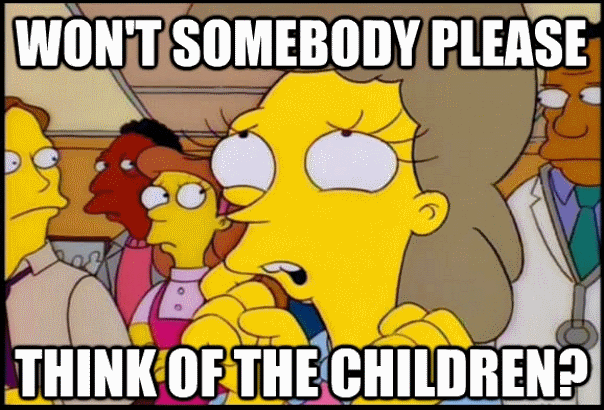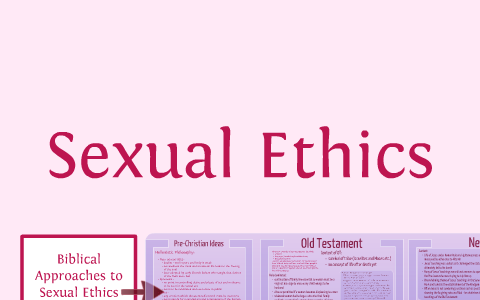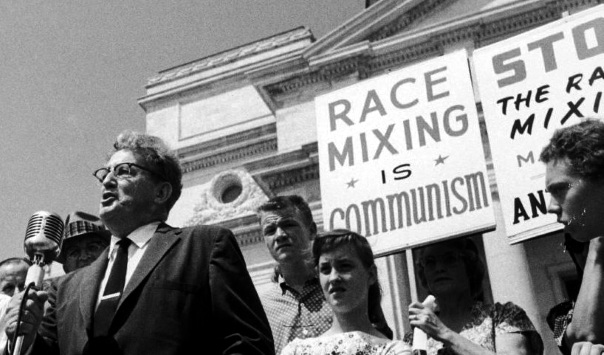An article from The Age was crying out for a look: How online porn is warping the behaviour of boys with girls. Porn is a two-edged sword. On the one hand, there is conservative moral panic about things that aren’t really a problem (see an old post about the “Center for Healthy Sex”). And then there are legitimate criticisms of many of porn’s tropes and trends and what they’re saying. Allison Pearson tries to do that but ends up missing the point by miles.
We need to educate and embolden our daughters to fight back against pornography, which is warping the behaviour of boys.
The “blame porn” stance does sound similar to the idea that video games are to blame for “rising violence” (which isn’t really rising in the way anti-games activists make out). To be charitable to Pearson, I agree that it’s more probable to me that watching porn has some effect on behaviour compared to no effect. Some studies seem to bear this out:

- A Taiwan study concluded adolescents exposed to online porn had a “greater likelihood of engaging in sexually permissive behavior”.
- A Swedish study concluded intercourse with friends “was significantly associated with high consumption of pornography among men, while anal intercourse and group sex tended to be associated”.
- A US study concluded adolescents exposed to porn were more likely to have had more sexual partners, used alcohol or other substances during sex and to have engaged in anal sex.
These were conducted before broadband and streaming video increased porn access a thousandfold. Not to say the sky is falling (or that “sexually permissive behaviour”, anal sex or group sex are somehow bad) but it does look like there’s an effect. The interesting thing would be to study what effects porn might be having or what messages mainstream porn sends. Instead, Pearson pearl-clutches.

Sometimes you hear a story that is so awful, it refuses to leave your mind, no matter how fervently you beg it to go away…Readers of a squeamish disposition, look away now.
I was having dinner with a group of women when the conversation moved on to how we could raise happy, well-balanced sons and daughters who are capable of forming meaningful relationships when internet pornography has changed the landscape of adolescence beyond recognition.
A couple of the women said they had forced themselves to have toe-curlingly embarrassing conversations with their teenagers on the subject. “I want my son to know that, despite what he might see on his laptop, there are things you don’t expect a girl to do on a first date, or a fifth date, or probably never,” said Jo.
So. Porn is meant to be a touchy subject, not for squeamish readers and not just embarrassing but “toe-curlingly” so. Spoiler alert: Pearson’s main point is about teenagers engaging in coerced anal sex. So it’s not like treating this subject as as embarrassing might do more harm than good, right?
There are also apparently things a [cishet] man should never “expect” a [cishet] woman to do. (Again, this is meant to be about anal sex.) A more healthy attitude would say that it’s not a good idea to expect a partner to do anything, especially if the expectation is of the active/coercive kind. The flip side of the coin – that some people are into some acts (including anal sex) and therefore sexual compatibility is a real thing – is not part of Pearson’s universe.
In recent years, Sue [a GP] had treated growing numbers of teenage girls with internal injuries caused by frequent anal sex; not, as Sue found out, because they wanted to, or because they enjoyed it, but because a boy expected them to. “I’ll spare you the gruesome details…but these girls are very young and slight and their bodies are simply not designed for that.”
Her patients were deeply ashamed at presenting with such injuries. They had lied to their mums about it and felt they couldn’t confide in anyone else, which only added to their distress. When Sue questioned them further, they said they were humiliated by the experience but they had simply not felt they could say no. Anal sex was standard among teenagers now, even though the girls knew it hurt.
From this description, Sue’s patients have experienced anything from coercive sex to sexual assault to rape. The primary issue is then consent (and boundaries) and not necessarily the idea that porn is setting up expectations anal sex. Because coercion, assault and rape happen for sex acts that Pearson can’t blame porn for popularising amongst “the youth”. Also if you think that anal sex is meant to intrinsically feel a particular way (eg. painful) and isn’t mediated by cultural expectations, I invite you to read this blog post by Heina Dadabhoy. Specifically the part about some Muslim-majority countries where anal sex is considered something a boy should stop receiving at age 16 lest he become addicted because it’s so pleasurable.
As a commenter on Pearson’s article noted, there’s no mention of giving teenagers education about anal sex; just the damaging idea that it’s unnatural and certain bodies aren’t designed for it (WTF?). If someone has a bad experience the implicit response is “you shouldn’t have been doin’ it in the butt”. Which is victim-blaming and not that different to a religious right response.
Here comes the zinger that shows up what’s wrong with Pearson’s attitude.
There was stunned silence around that table, although I think some of us may have let out involuntary cries of dismay and disbelief. Sue’s surgery isn’t in the brutalised inner-city but in a leafy suburb. The girls presenting with incontinence were often under the age of consent and from loving, stable homes. Just the sort of kids who, two generations ago, would have been enjoying riding and ballet lessons, and still looking forward to their first kiss, not being coerced into violent sex by some kid who picked up his ideas about physical intimacy from a dogging video on his mobile.
I’ll take classism and racism 100, thanks. Being coerced into anal sex is par for the course for the “brutalised” inner city, but OUR DAUGHTERS ARE WHITE AND PURE. It’s then not any suffering in the general community that’s prompted Pearson to write this article but the notion that the trend has reached her comfortable suburban leafiness. It’s rare that someone’s this open about it. How is refusing to acknowledge our common humanity (a good first step to fixing problems) meant to help the daughters of Pearson and her country-clubbing friends? And in case you missed it she mentions loving homes to further the misogynistic trope that girls must be having sex because they don’t respect themselves or have low self esteem or it’s a “cry for help”.
The harm is not just physical. According to a recent study, the number of schoolgirls at risk of emotional problems has risen sharply. Scientists for the Journal of Adolescent Health were surprised to see a 7 per cent spike in only five years among girls aged 11 to 13 reporting emotional issues. Boys remained fairly stable while girls faced “unique pressures”. Researchers said the causes could include the drive to achieve an unrealistic body shape, perpetuated by social media and an increasing sexualisation of young women.
Girls have always starved themselves to be more lovable, or maybe to have less of themselves to hate. What is new and dangerous is the ability to post selfies, then wait for approval to come flooding in. You don’t have to spend long with an insecure teenage girl (is there any other kind?) to work out that her happiness is tremulously yoked to the getting of Likes or little lovehearts on Facebook or Instagram. Take that female insecurity, warp and magnify it in the internet Hall of Mirrors, add a longing to be “fit” and popular, then stir into an ubiquitous porn culture and you have a hellish recipe for sad, abused girls.
So much wrong here. The study isn’t linked to or even named, not here and not in either news stories that I found. The April 2015 issue of the journal doesn’t seem to have it. The study is about a change which is hard to judge without seeing absolute numbers. The study didn’t look at causes. The researchers speculated this was likely due to a number of factors including academic pressure, increasing sexualisation and objectification amplified by social media and decreased mental health support. Even if the ability to post selfies is somehow contributing, which is a very dicey question, what does that have to do with porn? This is a third-hand account of research rearranged into word salad. Again, the assumption that adolescent girls (not boys!) who are “promiscuous” (as defined by their parents!) are having sex due to low self-esteem is patronising, demeaning and offensive.
It explains why more than four in 10 girls between 13 and 17 in England say they have been coerced into sex acts, according to one of the largest European polls on teenage experiences. Research by the universities of Bristol and Central Lancashire concluded that a fifth of girls had suffered violence or intimidation from teenage boyfriends, a high proportion of whom regularly viewed pornography, with one in five harbouring “extremely negative attitudes towards women”.
Putting aside that most studies of sexual assault suggest a decrease, this is saying that partner violence is high (which is true), but then throwing in some specious “link” that many of the abusers watch porn. To show how little this proves causation, I refer you to this article: Scientists at the University of Montreal launched a search for men who had never looked at pornography – but couldn’t find any.
The end result is what Sue sees as a GP. Young girls – children, really – who abase themselves to pass for normal in a grim, pornified culture. According to another study of British teenagers, most youngsters’ first experience of anal sex occurred within a relationship, but it was “rarely under circumstances of mutual exploration of sexual pleasure”. Instead, it was boys who pushed the girls to try it, with boys reporting that they felt “expected” to take that role. Moreover, both genders expected males to find pleasure in the act whereas females were mostly expected to “endure the negative aspects such as pain or a damaged reputation”.
This is the best point of the article. Sex ed (by which I mean what the culture teaches as opposed to just what’s taught in the classroom) is woefully inadequate. Much of the time it skirts over pleasure, especially female pleasure. As pointed out by Dan Savage, this can turn it into a reproductive biology class. Coupled with toxic beliefs about gender roles (including internalised messaging), this can lead to teenagers taking porn tropes as the accepted baseline.
There are plenty of reasonable critiques of mainstream porn though: its rigid gender roles, misogyny, inattention to female pleasure, racism, transphobia and more isms than you can poke a stick at. Pearson is trying to reinvent the wheel here, and doing it badly since instead of skewering these things she prefers to speak about the horror that teenagers are watching videos depicting *gasp* anal sex.
However embarrassing it may be, we need to educate and embolden our daughters to fight back against pornography, which is warping the behaviour of boys who are supposed to be their lovers, not their abusers. Anything that hurts and humiliates you is never OK. I suggest that future sex education classes begin with this joke: “I asked my wife to try anal sex. ‘Sure,’ she said: ‘You first.’”
That’s hilarious, because anal sex is a horrible experience geddit? That’s what sex ed should teach, not pleasure, consent or communication. Certainly not the nuance, not that there’s more porn in heaven and earth than is dreamt of in your philosophy. Not [gasp!] watching a mainstream porn video in sexed class with a critical eye. Nope, just shame and squeamishness.





0 Comments